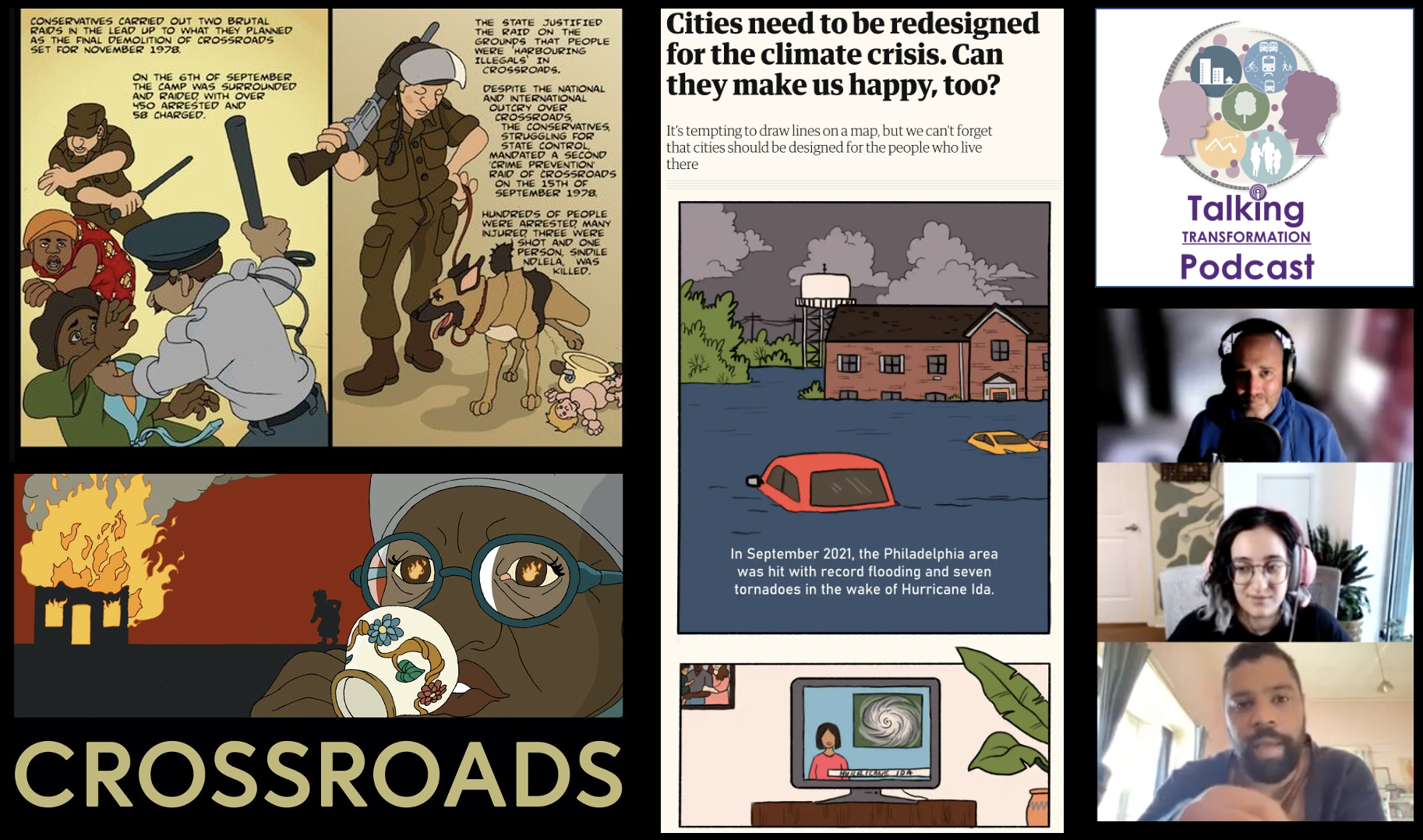TTPod 2.3 Changing the narrative
Storytelling and graphic novels in conveying the history and future of communities and cities

24 May 2022
Talking Transformation Podcast
English
Podcast
Talking Transformation Podcast
Africa, North America
This podcast episode is markedly different from the more routine Talking Transformation “script” and speaks to two graphic illustrators, Nathan Trantraal and Julia Louise Pereira from South Africa and Canada respectively. Both have used their talent to tell stories about factors that have shaped or are currently shaping our cities and communities.
I’ve been wanting to have this discussion since coming across the internationally acclaimed: Crossroads I Live Where I Like: A Graphic History publication. It’s a non-fictional cartoon strip set in 1970s South Africa - that tells the powerful and moving story of the women-led resistance to apartheid laws, planning principles and community rhetoric of the time. To understand Crossroads in Cape Town you can begin to understand the trauma and legacy of apartheid in South Africa and the role and bravery women showed in shaping and fighting the authorities. The story embodies the mantra: “You Strike a Woman, You Strike a Rock / Wathint' Abafazi, Wathint' Imbokotho”.
Nathan Trantraal is one half of the two Trantraal brothers who illustrated the book. He is a poet, cartoonists, writer and and translator, currently lecturing in School of Languages at Rhodes University on this very subject of the graphic novel.
I’m very much looking forward to understanding the genesis of the project, how the book was received locally and internationally and the importance of the medium in the age of social media and attention deficit that we frequently seem to be caught up in.
The inspiring Julia Louise Pereira is based in Toronto, Canada. Her recent comic strip in the UK’s Guardian tackled the subject of climate change in cities and what has been done and what can be done to address this global crisis via small-scale and larger city building initiatives. Her comic strip “Cities need to be redesigned for the climate crisis. Can they make us happy, too?”, resonated by reflecting on actual families affected by Hurricanes Ida and Sandy. The point hammered home is that – like with so many urban issues – the impacts and worst of the effects are borne by the most disadvantaged communities.
As her comic strip suggests: “it’s tempting to design a city by drawing lines on a map. But that ignores what cities are for. To serve the people who live there.” The strip raises the issue of cultural identity, sense of place and belonging and in a clear and precise graphical form illustrated issues of redlining, physical buffers between communities. It’s a masterclass in demonstrating the multiple agendas and challenges faced by cities and the approaches from small “pinprick” interventions to grander city building initiatives.
Both the South African and American case studies use real people, telling their stories to frame the graphics and storyline. They are inspiring and informative means of digesting the complexities and in many instances traumatic stories. I hope you enjoy their reflections and message in this episode.
Recorded 22nd May, 2022



Comments